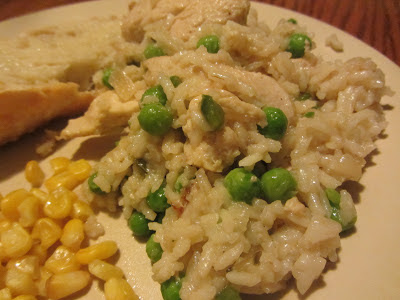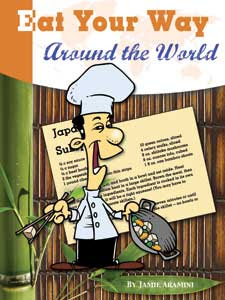(This post contains affiliate links. Please see my disclosure policy for full details.)
It has been such a big hit around our house. Eat Your Way Around the World
 , by Jamie Aramini, is a recipe book designed to be an enrichment companion to Geography Matter's Galloping the Globe Curriculum. As an international recipe book, it can be used with ANY world geography program but is organized to reinforce the countries included in the Galloping the Globe book.
, by Jamie Aramini, is a recipe book designed to be an enrichment companion to Geography Matter's Galloping the Globe Curriculum. As an international recipe book, it can be used with ANY world geography program but is organized to reinforce the countries included in the Galloping the Globe book. |
| Pabellon from Venezuella |
Take a peek inside
- The book is divided by continent and then sub-divided by country. Three recipes are included for each country and are generally a nice mix of a main dish, side dish, and dessert OR starter.
- Also included is a brief informational description about the country and a few trivia-type tidbits usually focused on the dining culture of the area.
- Reproducible food journal pages and an entire passport activity kit are found in the back of the book and can be used to create a dinnertime "experience", not just a meal.
How we've used the book
While it would be impossible to serve an entire meal at our co-op Geography club meetings, we try to provide a snack-type dish for the group to sample. We discuss some of the other national foods of that country and any cultural dining practices that we feel are relevant.Later in the week, I try and make one entire meal from the recipe book to serve to my family. After several months of serving up national dishes, I've only had one recipe NOT pass the picky-eater test. (I must warn you, however. I've always cooked a lot of international meals. So my kids are quite used to spice.)
I have served each dish with a healthy dose of reality knowing that my main reason for cooking each one is to reinforce the country and culture we have been studying...NOT to add another meal to our list of household favorites. However, I've been pleasantly pleased on more than one occasion when a meal has received a unanimous "thumbs up" at dinner and I've added it to my personal recipe box.
 |
| Arroz con Pollo from Peru |
What I really liked about Eat Your Way Around the World
It's clear that the author took great care to not only provide a wonderful sampling of what each country has to offer, but has written each recipe in such a way as to be both budget and taste-bud friendly. She has adapted historically popular recipes to use ingredients that are easily accessible to the average homeschool household. Who wants to buy a bunch of expensive spices or sauces that you may not ever use again? The ingredients, while regionally accurate, are simple and can be found in most local grocery stores...or even in your own pantry!
Recreating a national dish has really helped us understand not only the culture of a particular part of the world but also the landscape, climate, and resources. Obviously, all of these elements are reflected in what the locals can grow in order to eat.
The verdict is still out whether our co-op will proceed with the geography club theme next year or move on to something new. But I have no doubt that our family will continue to eat our way around the world and then try out some recipes a little closer to home with the companion book, Eat Your Way Through the USA
 .
.



We find that eating food to go with a country or historical time period is such a great way of re-enforcing learning. We use a different book plus a bit of help from the internet but I think this book will go on my wish list!
ReplyDeleteThat's fantastic, Sarah. I'd love to know the name of the book you use. Any particular nations/time periods your family has loved most? We still eat a great stew that we had made up several years ago when we were learning about the American "whaling" days...and Johnny cakes from the pioneer/Civil War era.
DeleteWe use "I want to be a chef around the world."
DeleteNot from the book, but Roman spelt bread went down well and any curry!